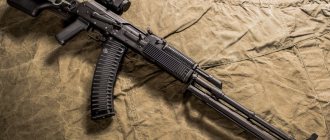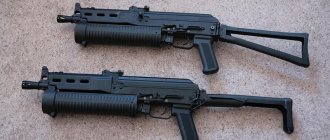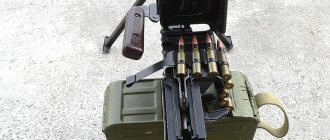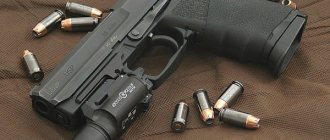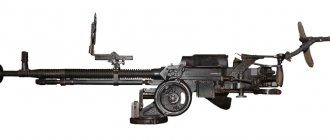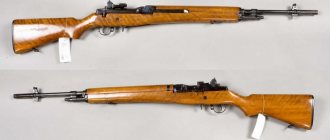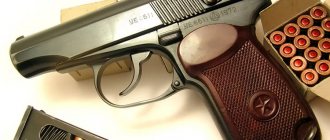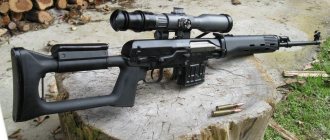| This article raises many issues. Please help | This article includes a list of common references, but it remains largely unverified because It lacks a sufficient number of relevant embedded links . |
| This article requires additional links for verification . |
(Learn how and when to remove this message template)
| 9.3 × 62 mm | |||
| Cartridge 9.3 × 62 mm (Norma Oryx 15g). | |||
| Type | Rifle | ||
| Place of origin | German Empire | ||
| Production history | |||
| Designer | Otto Bock | ||
| Developed | 1905 | ||
| Produced | 1905–present | ||
| Characteristics | |||
| Type of shell | Rimless, bottleneck | ||
| Bullet diameter | 9.30 mm (0.366 in) | ||
| Neck diameter | 9.92 mm (0.391 in) | ||
| Shoulder diameter | 11.45 mm (0.451 in) | ||
| Base diameter | 12.10 mm (0.476 in) | ||
| Rim diameter | 11.95 mm (0.470 in) | ||
| Rim thickness | 1.30 mm (0.051 in) | ||
| Case length | 62.00 mm (2.441 in) | ||
| Full Length | 83.60 mm (3.291 in) | ||
| Case capacity | 5.07 cm 3 (78.2 g H 2 O) | ||
| Rifle twist | 360 mm (1-14.17 inch) | ||
| Primer type | Big rifle | ||
| Maximum pressure | 390.00 MPa (56.565 psi) | ||
| Ballistic characteristics | |||
| 3,563 ft⋅lbf (4,831 J) | |||
| 232 g (15 g) Norma Oryx | 2,625 ft/s (800 m/s) | 3,551 ft⋅lbf (4,815 J) | |
| 275 g (18 g) Norma Solid | 2,450 ft/s (750 m/s) | 3666 ft⋅lbf (4970 J) | |
| 285 g (18 g) Norma Oryx | 2,362 ft/s (720 m/s) | 3,544 ft⋅lbf (4,805 J) | |
| 286 g (19 g) Swift A-Frame | 2,362 ft/s (720 m/s) | 3,544 ft⋅lbf (4,805 J) | |
From left to right: 9.3×62mm, .30-06 Springfield, 7.92×57mm Mauser, 6.5×55mm, and .308 Winchester cartridges.
Norma Oryx Soft Point cartridges in a plastic holder (manufacturer Norma Precision AB, Sweden) 9.3 × 62mm
(also known as
the 9.3×62mm Mauser
) is a rimless, abutted rifle cartridge developed in 1905 by German gunsmith Otto Bock. It is suitable for hunting medium to large game in Africa, Asia, Europe and North America. With a typical speed of 720 m/s (2,362 ft/s), its standard 286 g (18.5 g) load balances recoil and power for effective use up to 250 m (275 yd). The CIP Maximum Mean Pressure (MAP) for the 62mm 9.3× is 390.00 MPa (56565 psi). [2]
The 9.3×62mm was designed to fit into the Mauser 98 bolt-action rifle. [2] European hunters and settlers in Africa often chose military rifles because of their reliability and low cost, but colonial governments in Africa, fearing uprisings, often banned military-caliber rifles and ammunition. The 9.3×62mm was never a military cartridge and therefore never had this problem. Like their military counterparts, Mauser rifles chambered in 9.3×62mm were relatively inexpensive and quite reliable. Due to these factors, the 9.3x62mm quickly became popular and use of the cartridge became widespread.
The 9.3×74mmR is a rim cartridge that evolved from the 9.3×72mmR black powder cartridge. The energy levels of the 9.3×62mm and 9.3×74mmR cartridges are similar, but the cartridges are not related. The rimmed cartridge is slightly longer than the 9.3x62mm, allowing for lower case pressure while maintaining muzzle velocity and energy.
Ammunition
The 9.3×62mm bullet was first loaded with an 18.5 g (285 g) bullet with a muzzle velocity of 655 m/s (2,150 ft/s). After World War I, some companies increased the velocity to 730 m/s (2,400 ft/s) and produced lighter bullets. Rifles tuned to the original load must have sights adjusted to fire the new load at the point of aim. In addition, loads with both speeds are available today. Several European firms load 9.3x62mm ammunition, including Lapua, Norma, RUAG Ammotec (RWS), SAKO and Prvi Partizan (PPU), as well as Denel (PMP) from South Africa, and these are widely available in Africa. [3]
In England, Kynoch is a renowned cartridge manufacturer that produced ammunition, referring to the 9.3×62mm as the "9.3mm Mauser". It was typically loaded as a "soft nose metal bullet", 18.5 grams (285 g) with Kynoch 9.3 mm markings on the base. It is no longer listed by them.
Photo by SVDK
SVDK with installed sight 1P70 "Hyperon"
Similar
AK-47 assault rifle cartridge caliber 7.62 mm.
Device. Rate of fire AK-74 assault rifle cartridge 5.45 mm caliber. Device. Rate of fire
Dragunov SVD sniper rifle caliber 7.62 mm. Device
AKS-74U assault rifle cartridge caliber 5.45 mm. Device. Weight
Mauser K96 pistol cartridge caliber 7.63 and 9 mm. Device
Pistol Walter PP / PPK cartridge caliber 7.65 and 9 mm. Device
Pistol Yarygin PYa Grach cartridge caliber 9 mm. Device
DShK machine gun cartridge caliber 12.7 mm. Device. Rate of fire
Luger pistol R.08 Parabellum cartridge caliber 9 mm. Device
Pistol PM cartridge caliber 9 mm. Rate of fire. Dimensions. Bullet speed. Sighting range
Self-loading shotgun Saiga-12 cartridge, caliber. Device
Maxim machine gun cartridge caliber 7.62 mm. Device. Weight
PPSh-41 Shpagina submachine gun cartridge caliber 7.62 mm
APS Stechkin pistol cartridge caliber 9 mm. Device
Nagan system revolver cartridge caliber 7.62 mm. Device
Kalashnikov PK machine gun and PKM cartridge caliber 7.62 mm. Device
Simonov carbine SKS-45 cartridge caliber 7.62 mm. Device
Rifles and carbines Mauser 98 caliber 7.92 mm. Device
PPS-42 and PPS-43 Sudaev submachine gun cartridge caliber 7.62 mm
Pistol Walter P38 cartridge caliber 9 mm. Device
MP-40 German submachine gun cartridge caliber 9 mm. Device
VSS Vintorez sniper rifle caliber 9 mm. Device
Submachine gun PP-91 Kedr cartridge 9 mm caliber. Device
Light machine gun RPK-74 cartridge caliber 5.45 mm. Device
Pistol Glock 17 cartridge caliber 9 mm. Device
Makarych, Izh-79-9T, MR-79-9TM, MP-80-13T traumatic pistol
AK-12 assault rifle cartridge caliber 5.45 mm. Device. Weight
Mosin rifles and carbines Three-line caliber 7.62 mm
PMM Makarov pistol modernized 12 rounds. Device
Revolver Colt Single Action Army (SAA) Peacemaker. Device
Machine gun PKP Pecheneg cartridge caliber 7.62 mm. Device
Sniper rifle VSSK Exhaust caliber 12.7 mm. Device
Beretta pistol 92 cartridge caliber 9 mm. Device
TT - Tokarev pistol cartridge caliber 7.62 mm. Device
Submachine gun PP-19 Bison cartridge caliber 9 and 7.62 mm. Device
Sniper rifle SV-98 caliber 7.62 mm. Device
Vladimirov KPV machine gun cartridge caliber 14.5 mm. Device
ASH-12 assault rifle cartridge caliber 12.7 mm. Device. Rate of fire
PSM pistol cartridge caliber 5.45 mm. Device
Pistol Colt M1911A1 cartridge caliber 45. Device
Smith-Wesson revolver Russian cartridge, caliber 10.67 mm. Device
Degtyarev DP-27 light machine gun, 7.62 mm caliber cartridge. Device
Shotgun Mossberg 500 Cartridge. Dimensions. Rate of fire. Sighting range
Thompson submachine gun cartridge caliber 11.43 mm. Device
Pistol USP Heckler und Koch cartridge, caliber. Device
Hunting carbine OSK-88 (SVT-40) caliber 7.62 mm. Device
AS Val silent automatic cartridge caliber 9 mm. Device
Submachine gun PP-19-01 Vityaz cartridge 9 mm caliber. Device
Machine gun Kord cartridge caliber 12.7 mm. Device. Weight. Sighting range
Osa - traumatic pistol cartridge, caliber. Device
AK-9 assault rifle cartridge caliber 9 mm. Device. Rate of fire
Degtyarev RPD light machine gun, 7.62 mm caliber cartridge. Device
Automatic OTs-14 Groza cartridge caliber 9 mm and 7.62 mm. Device
Czech pistol CZ-75 (modifications). Device
Browning pistol 1903 cartridge caliber 9 mm. Device
Sniper rifle OSV-96 caliber 12.7 mm. Device
FN P90 submachine gun cartridge caliber 5.7 mm. Device
Submachine gun OTs-02 Cypress cartridge caliber 9 mm. Device
Sniper rifle ASVK Kord caliber 12.7 mm. Device
Automatic AEK-971 Cartridge. Caliber. Device. Rate of fire
Steyr AUG assault rifle (A1, A2, A3) cartridge caliber 5.56 mm
AK series 100 assault rifles. Modifications. Device. Weight. Dimensions
Uzi submachine gun. Cartridge. Caliber. Rate of fire
Pistol SR1M Gyurza cartridge caliber 9 mm. Device
Pistol GSh-18 cartridge caliber 9 mm. Device
SVDK sniper rifle caliber 9.3 mm. Device
Automatic SR-3M Whirlwind cartridge caliber 9 mm. Device
Machine gun NSV-12.7 Utes cartridge, cal. Device. Weight
Kalashnikov RPK light machine gun cartridge caliber 7.62 mm. Device
Sniper rifle VSK-94 caliber 9 mm. Device
Vostok-1 (Jorge-3M) 9mm caliber traumatic pistol. Device
Degtyarev PPD submachine gun cartridge caliber 7.62 mm
English sniper rifle L96A1 cartridge, caliber
M1 Garand rifle cartridge caliber 7.62 mm. Device
Desert Eagle pistol. Device
Smith-Wesson revolver (modifications). Device
Automatic rifle HK G36 (E, K, C, KE) cartridge caliber 5.56 mm
Pistol P-96 cartridge caliber 9 mm. Device. Rate of fire
Pistol GP35 Browning High Power cartridge, caliber. Device
Assault rifle FN SCAR (L, H) cartridge caliber 5.56 and 7.62 mm
Revolver Lefoshe M1856 cartridge caliber 11 mm. Device
Submachine gun PP-90 cartridge caliber 9 mm. Device
AN-94 Abakan automatic Nikonov cartridge caliber 5.45 mm. Device
Submachine gun PP-2000 cartridge caliber 9 mm. Device
Mauser pistol HSc cartridge caliber 7.65 and 9 mm. Device
M16 automatic rifle cartridge caliber 5.56 mm. Device
Fedorov assault rifle cartridge caliber 6.5 mm. Device. Rate of fire
Pistol Baltiets cartridge caliber 7.62 mm. Device
Strizh pistol cartridge caliber 9 mm. Device. Weight. Sighting range
Browning pistol 1910 cartridge caliber 7.65 and 9 mm
Silent pistol PSS Vul cartridge caliber 7.62 mm. Device
Pistol SIG-Sauer P226 cartridge caliber 9 mm. Device
Pistol OTs-27 Berdysh cartridge caliber 7.62 mm and 9 mm. Device
AK-107 assault rifle cartridge caliber 5.45 mm. Device. Rate of fire
OTs-44 sniper rifle, caliber 12.7 mm. Device
German machine gun MG3 cartridge caliber 7.62 mm. Device
Self-loading shotgun Browning Auto-5 cartridge, caliber. Device
Submachine gun AEK-919K Kashtan cartridge caliber 9 mm. Device
PB pistol silent cartridge 9 mm caliber. Device
Pistol OTs-33 Pernach cartridge caliber 9 mm. Device
Hunting carbine KO-98 cartridge caliber 7.92 mm. Device
TK (Korovin pistol) caliber 6.35 mm. Device. Weight. Dimensions
Underwater assault rifle APS cartridge caliber 5.66 mm. Device
Pistol OTs-21 Malysh cartridge caliber 9 mm. Device
American M60 machine gun, 7.62 mm caliber cartridge. Device
MTs-116M sniper rifle, caliber 7.62 mm. Device
Automatic 9A-91 cartridge caliber 9 mm. Device. Rate of fire
Submachine gun PP-93 cartridge caliber 9 mm. Device
VAG-73 - Gerasimenko pistol. Device. Weight. Dimensions
Cordon-5 is a traumatic pistol. Device. Weight. Dimensions
Goryunov SG-43 heavy machine gun cartridge caliber 7.62 mm. Device
Webley revolver cartridge, caliber. Device. Dimensions. Weight
Machine gun AEK-999 Badger cartridge caliber 7.62 mm. Device
RP-46 machine gun, 7.62 mm caliber cartridge. Device. Rate of fire
Sniper rifle VS-8 cartridge caliber 8.6 mm. Device
Slostin machine gun cartridge caliber 7.62 mm and 14.5 mm. Device
Assault rifle Tavor TAR-21 cartridge caliber 5.56 and 5.45 mm
Submachine gun SR-2 Veresk cartridge caliber 9 mm. Device
Lancaster pistol cartridge caliber 12.1 mm. Device. Rate of fire
Submachine gun PP-90M1 cartridge caliber 9 mm. Device
Underwater pistol SPP-1M. Device. Weight. Dimensions
Traumatic pistol MP-461 Guard. Device. Weight. Dimensions
Lebel rifles and carbines are cartridgeed in 8 mm caliber. Device
Automatic A-91 cartridge caliber 7.62 mm. Device. Rate of fire
M14 automatic rifle cartridge caliber 7.62 mm. Device
Revolver Smith & Wesson Model 10 Military & Police
Automatic rifle FN FAL cartridge caliber 7.62 mm. Device
Submachine gun STEN MK 2. Device. Weight. Dimensions
Traumatic pistol IZH-78-9T Chain mail cartridge caliber 9 mm
Leader-M traumatic pistol 11.43×32T. Device. Weight. Dimensions
Ingram M10 and M11 submachine gun. Device. Weight. Dimensions
Pistol Steyr M9-A1 cartridge caliber 9 mm. Device. Weight
Pistol OTs-23 Dart cartridge caliber 5.45 mm. Device
Berthier rifles and carbines caliber 8 mm. Device
Automatic shotgun USAS-12 cartridge caliber 18.5 mm
Sniper rifle VS-121 caliber 7.62 mm. Device
Traumatic pistol MP-353 cartridge, caliber 11.43 mm
Tiss machine gun cartridge caliber 9 mm. Device. Rate of fire
Traumatic pistol MP-355 cartridge caliber 9 mm. Device
Automatic double-medium ADS cartridge caliber 5.45 mm. Device. Rate of fire
Traumatic pistol MP-81 cartridge caliber 9 mm. Device
Pistols Zastava 70 and 70(k), cartridge caliber 7.65 or 9 mm. Yugoslavia
Sniper rifle GALATZ (Galil) cartridge caliber 7.62 mm
Pistol MP-444 Bagheera cartridge caliber 9 mm. Device
Revolver Colt New Army / Navy. Device. Bullet speed. Sighting range
Type 64 is a Japanese automatic rifle. Device
In the other place
| This section requires additional links for verification . |
In several European countries, the 9.3x62mm remains a popular cartridge for elk and wild boar hunting, and is offered as a standard cartridge in rifles from most manufacturers. The CZ-USA CZ 550 9.3x62mm chambering rifle became available in North America in 2002, and both the rifle and cartridge are gaining a strong following there, as the cartridge has a slight power advantage over the popular .35 Whelen cartridge. In the US, several ammunition manufacturers, including Federal, Hornady, Nosler, and Swift, offer factory sporting ammunition in 9.3x62mm. Since surplus Scandinavian and European 9.3 Mausers were brought to Canada in the early 1950s, Canadian hunters have used the 9.3×62mm cartridge to hunt big game in Canada, including bison, all types of deer, and large bears. In recent years, CZ from the Czech Republic, as well as SAKO and Tikka from Finland, have imported many 9.3x62mm rifles into Canada and the USA, where demand continues to be high.
Adequacy
9.3×62mm is considered ideal for hunting larger, tougher African game species such as lions, leopards, gemsboks, eland and wildebeest. Most hunters consider it a viable all-around cartridge, comparable to the .338 Winchester Magnum, 9.3×64mm Brenneke, and .375 H&H Magnum. 9.3×62mm perfectly picked up all the dangerous wildlife species in Africa. Although in most countries it has a smaller diameter than the legal minimum caliber of 0.375 for dangerous game, many countries specifically make an exception for the 9.3×62mm caliber. [4] [5] [6] The 9.3 × 62 mm size is considered suitable for European and North American wild animals that could become dangerous, such as wild boars and bears.
Sambar hunters in Australia are turning to the 9.3×62mm due to the federal government's ban on self-loading rifles in 1996. [ citation needed
] Thousands of deer hunters immediately needed bolt-action rifles that would provide one-shot Sambar kill, and the 9.3×62mm proved well suited to the task.
Undeservedly forgotten 9.3x62 Mauser
photo: Anton Zhuravkova
From the moment of its appearance in 1905 until the end of the 1960s, when problems arose with the acquisition of both equipped cartridges and components for its independent equipment, this cartridge was considered truly universal and rightfully enjoyed the fame of the most popular cartridge among African hunters. popular non-military cartridge.
The advent of smokeless powder and jacket bullets radically changed African hunters' ideas about rifled weapons in general. The flatness of the trajectory and the incredible penetrating ability of the bullets of the new cartridges (7x57, .303, 6.5x54 Manlicher, 8 mm Lebel) were the best arguments in favor of new types of weapons.
Martini-Henrys, Snyders and Mausers of 11.2 mm caliber, which had excess power for hunting small and medium game, but were poorly suited for hunting large and dangerous animals, were almost immediately forced out of hunting use and remained only among those hunters who for some reason I couldn't afford to buy a new rifle.
The victorious march of “small” calibers was suspended for some time by the plague epidemic that struck the countries of Central and Southern Africa and lasted three years (1894-1897). Antelopes died by the millions and in some areas virtually disappeared. The dramatic decline in the antelope population has changed hunting ethics and practices.
Previously, it was believed that if the animal at which the shot was fired did not show obvious signs of injury, then it was not worth pursuing, that there was a mistake and the shot was fired at another target. When the game supplies became scarce, sometimes several days began to pass between the shot at the first and second targets. And in such circumstances, the first shot should have been effective.
It was thanks to these circumstances that the shooting class and skills of tracking wounded animals sharply increased. Hunters began to understand that military-style bullets were not very suitable for hunting; the appearance of soft-head bullets improved the situation somewhat, but even they did not have the stopping effect of bullets that were fired from old rifles using black powder, and there were also interruptions in their supply to hunters .
The logical way out of this situation was the abandonment of some conservative hunters from small-caliber weapons in favor of time-tested and reliable old rifles. And hunters who held progressive views on the evolution of firearms began to purchase medium-caliber weapons supplied to the market by the British and Germans.
The British quickly got their bearings and mastered the production of weapons, mainly rifles, of large caliber for hunting large and dangerous animals. But it was more of a weapon for a gentleman who enjoyed hunting than a working tool for a professional hunter.
The requirements of professional hunters for weapons were clearly defined: it must be an inexpensive, reliable weapon chambered for a powerful stopping effect, suitable for hunting an elephant or hippopotamus, the recoil when firing from this weapon must be moderate so that it can be used, among other things. and for long-term shooting in self-defense.
If there is demand, there will be supply. The British began producing weapons in the following calibers .400/.350 (Rigby) Express, .400/.360 (Purdey and Westley Richards), the Germans, as they say these days, prepared an “adequate response” by releasing weapons chambered for 9x57 and 10.75x57.
English weapons (may Anglomaniacs forgive me, but you can’t argue with the truth) were clearly divided into two categories: very expensive and high-quality weapons from well-known manufacturers chambered for their original cartridges, or cheap and low-quality weapons chambered for the .375 Express cartridge. Only the .350 Rigby cartridge enjoyed some popularity, but the supply (as well as the demand) of weapons chambered for this cartridge was very limited, because it was produced only by Rigby and was incredibly expensive.
| photo: Anton Zhuravkova |
The original cartridges were also not cheap, and due to very limited demand, buying them was far from easy. In addition, the Boers, French, Germans, Portuguese and other non-English people who bore the “white man’s burden” on the African continent were not particularly eager to purchase the products of the “puffy islanders,” including weapons, unless they were significantly superior to what they what was happening at home.
German cartridges, developed on the basis of the 7.92 mm military cartridge, were excellent for hunting thin-skinned animals, could be used with certain restrictions for hunting Kaffir buffalo or hippopotamus, but were absolutely not suitable for hunting elephants. It was in this, frankly speaking, market that was not spoiled by supply that the 9.3x62 Paul Mauser cartridge appeared.
In 1905, a standard Mauser rifle cost five pounds sterling.
The rifle was distinguished by its high reliability and shooting accuracy. The 8 mm Mauser and 9x57 cartridges rightfully enjoyed a reputation as the best small-caliber cartridges loaded with smokeless powder, even though the stopping effect of these cartridges was insufficient for hunting large and dangerous animals. The 9.3x62 cartridge corrected this omission. It was an excellent, perfectly balanced cartridge, which also did not have tooth-breaking recoil. The “rifle-cartridge” tandem achieved tremendous success and recognition among hunters and, notably, not only in the German colonies.
In order to defeat the British on their own field, Paul Mauser began production of the M98 rifle in the “A” version. These rifles had everything necessary to arouse the interest of English gentlemen in this weapon, including a diopter sight, a forend made of Kaffir buffalo horn or rhinoceros horn, and an English-style stock. Even despite all the bells and whistles, the Mauser version “A” cost about half as much as an English rifle of the same quality, and, naturally, was sold like pie by the colonists, regardless of their nationality.
Perhaps the 9.3x62 cartridge was the last truly universal cartridge. The 286-grain bullet achieved a velocity of 716 m/s (this was higher than the velocities of modern British bullets) and had sufficient energy and penetration to reliably kill an elephant in most cases. At the same time, this cartridge could also be used to hunt impala or warthog.
The flatness of the trajectory made it possible to hunt with a constant sight on any game at distances of up to 200 m.
It was a truly working cartridge. There was one more circumstance that contributed to the growth of its popularity: these cartridges could be bought in any gun store in Africa from Cairo to Cape Town. This circumstance was of extremely great importance not only for hunters, but also for farmers, who were cut off from cities for months - either because of the rainy season, or because of military operations, or because of an epidemic.
I cannot help but mention one more circumstance due to which the 9.3x62 cartridge became, perhaps, the first truly international cartridge. The fact is that it was originally created not for the needs of the army, but as a hunting cartridge. And the fact that it was NOT a cartridge in service with one of the warring (at that time not yet warring) sides also contributed to its spread among hunters.
.303 cartridges were impossible to find outside the British colonies in Africa, 8 mm Lebel was used only in the French colonies, but 9.3x62 could be found in any African outback, regardless of which of the six metropolises a particular colony belonged to.
If we talk about the scope of the 9.3x62 cartridge, then, by all accounts, it was not suitable only for chasing a wounded elephant in the dense bush. For this purpose, professionals used either large-bore rifles (.500 caliber and above) or a double-barreled shotgun of at least .450 caliber. For hunting in open spaces, professional elephant hunters preferred the “nine”.
| 9.3x62mm cartridge (right) compared to .30-06 and .223 Remington. Photo: wikipedia.org |
The famous hunter George Rushby hunted lions and elephants with equal success with a “nine”. With his 9.3x62 double-barreled shotgun, he took down ten man-eating lions in Nyombe, Tanzania. He writes that circumstances forced him to sell the shotgun, and the replacement .400 caliber shotgun he bought was just as effective on elephant hunting, but much less effective on lion hunting. (Perhaps the reason for this lies in the fact that the 9.3x62 bullet, unlike the heavier but slower .400 caliber bullets, had a higher than a certain critical (600 m/s) speed at which hydrodynamic impact occurs in the victim’s body and the central nervous system is more affected.)
The Second World War was the milestone from which the gradual decline in the popularity of the 9.3x62 cartridge began. In the early 1960s, problems arose with purchasing high-quality cartridges. The cartridges, produced by companies such as Norma and S&B (Czechoslovakia), were suitable for hunting medium game, no larger than eland or deer. Going after an elephant with such cartridges was tantamount to suicide. New European rifles were much more expensive than at the dawn of the century, and the new trendsetters in trophy hunting believed that the only cartridge with which one could hunt in Africa was the magnum.
In general, in the 1970s, the 9.3x62 cartridge completely disappeared from hunting use, but in Europe it continued to be very popular. Moreover, in recent years there has been a surge (without lying, no speech is said, stated Gorodnichy from Gogol’s “The Inspector General”) of interest in this cartridge.
CZ released a rifle chambered for this caliber, and RWS began producing high-quality but insanely expensive 9.3x62 cartridges. By the way, the RWS cartridge with a bullet weighing 293 grains fully meets the requirements for cartridges intended for hunting elephant, kaffir buffalo and hippopotamus.
More and more hunters are discovering the versatile 9.3x62 cartridge. For those who mainly hunt small and medium game, and only occasionally hunt large and dangerous game, for those the choice of a weapon chambered for 9.3x62 will be correct. The firing efficiency of modern 9.3x62 cartridges is in no way inferior to the efficiency of a .375 caliber cartridge, but the comfort of the shot is immeasurably higher.
Of course, the “nine” has excess power if you are hunting a marmot, but for hunting a tyrannosaurus the cartridge will be clearly weak. As for other types of game in between, today the 9.3x62 cartridge will also confidently cope with the tasks assigned to it, as it was more than a hundred years ago, back in 1905.
Vladimir Elenin June 20, 2014 at 00:00
References
- 9.3x62mm Norma data
- ^ ab "Greatest Cartridges: Mauser 9.3×62, Effective on Almost Anything". gundigest.com
. Retrieved March 3, 2022. - "Mauser 9.3x62mm". thebiggamehuntingblog.com
. Retrieved March 3, 2022. - Minimum required caliber for hunting in Africa
- "Minimum calibers for Africa". Archived from the original on July 14, 2014. Retrieved February 10, 2015.
- Hunting laws and import of rifles NAFA Namibian Professional Hunters Association
- "The 9.3 x 62mm Mauser is back again!" . rebooters. Archived from the original on February 7, 2009. Retrieved February 24, 2006.
- "Mauser 9.3 x 62". African hunter. Archived from the original on December 15, 2005. Retrieved February 24, 2006.
- "Czeska Zbrojovka CZ 550 FS 9.3×62". RGI Media. Retrieved April 9, 2008.
